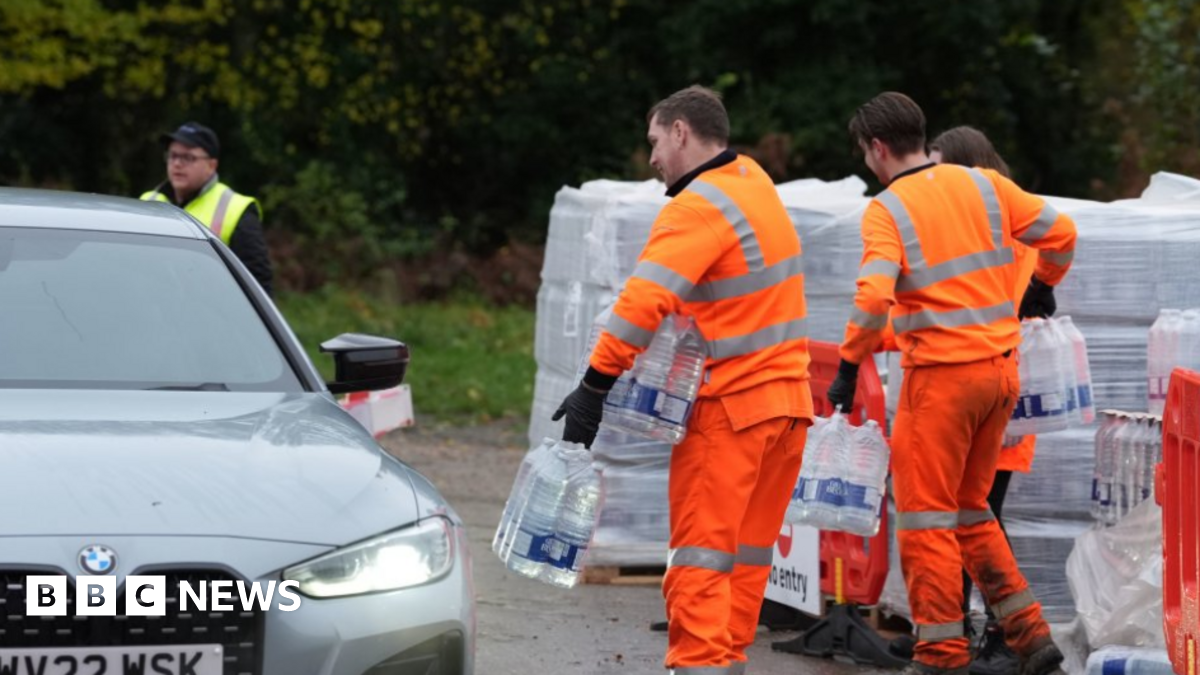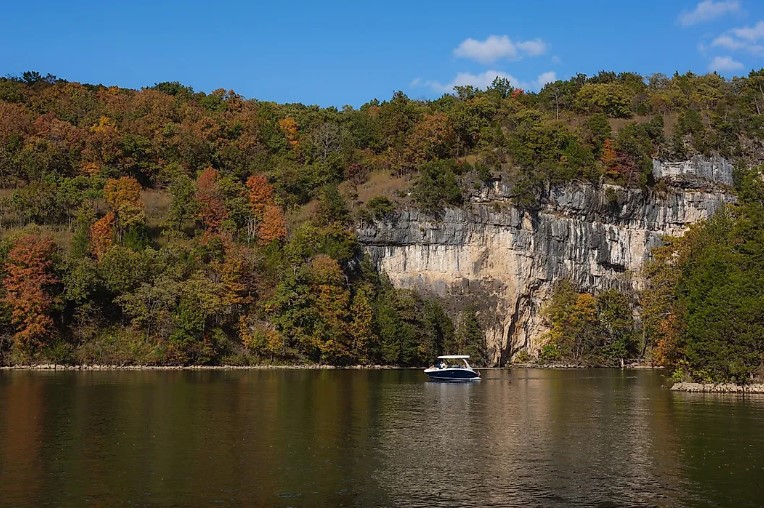Emptying aquifers creating sinkholes, economic issues worldwide – Mines Newsroom

Global Aquifer Depletion: A Critical Challenge to Sustainable Development Goals
The unsustainable extraction of groundwater from subterranean aquifers presents a significant global threat to the achievement of multiple Sustainable Development Goals (SDGs). This report details the challenges of aquifer depletion and associated land subsidence, drawing on recent research to highlight the impacts on water security, urban stability, and food production, thereby directly addressing SDG 6 (Clean Water and Sanitation), SDG 11 (Sustainable Cities and Communities), and SDG 2 (Zero Hunger).
Global Subsidence Mapping and its Implications for SDG 11
Research conducted by Associate Professor Pejman Tahmasebi has produced a global map of land subsidence areas, utilizing machine learning to predict regions vulnerable to this phenomenon. The findings underscore a critical link between groundwater management and urban resilience.
- Primary Cause: The study identifies abnormal groundwater extraction as the principal driver of land subsidence on a global scale.
- Vulnerable Regions: Areas in Asia, including parts of India, Pakistan, Iran, and Indonesia, exhibit high vulnerability due to extensive groundwater use for agriculture, often exacerbated by drought conditions.
- Impact on SDG 11: Land subsidence directly threatens the safety and sustainability of cities and communities by damaging and destroying critical infrastructure. The predictive mapping model serves as a vital tool for urban planners to mitigate these risks and build more resilient settlements, in line with Target 11.5.
- Impact on SDG 6: The over-extraction driving subsidence is a clear indicator of unsustainable water management practices, directly contravening the objectives of SDG 6 to ensure the availability and sustainable management of water.
Case Study: The Ogallala Aquifer and its Link to SDG 2
The research of Professor Lucas Bessire on the Ogallala Aquifer in the North American Great Plains provides a focused analysis of the consequences of depleting a non-renewable water source, highlighting profound implications for food security.
- A Non-Renewable Resource: The Ogallala Aquifer has an extremely slow recharge rate, meaning the water it contains is effectively “fossil water.” Current agricultural irrigation practices extract this water far faster than it can be replenished.
- Threat to Food Security (SDG 2): The aquifer supports one of the world’s most productive agricultural regions. Its depletion jeopardizes the long-term sustainability of food production systems, challenging the goal of achieving Zero Hunger.
- Socio-Economic Impact: The depletion is not merely a technical issue but is intertwined with the history and identity of the communities that depend on it, illustrating how environmental degradation impacts social fabric and intergenerational equity.
Pathways to Sustainable Groundwater Management and SDG Attainment
Addressing the crisis of aquifer depletion requires a strategic shift in water management and urban planning. The research points toward several key interventions necessary to protect this vital resource and advance the 2030 Agenda for Sustainable Development.
Recommendations for Policy and Practice
- Prioritize Alternative Water Sources: To align with SDG 6, reliance on groundwater extraction should be minimized. Municipalities like Houston are demonstrating leadership by increasing the use of surface water from reservoirs and improving floodwater management.
- Integrate Subsidence Risk into Urban Planning: Data from global subsidence maps should be used to inform urban development and infrastructure projects, safeguarding communities and investments as stipulated under SDG 11.
- Improve Agricultural Water Efficiency: Given that agriculture is a primary driver of groundwater extraction, implementing advanced irrigation technologies and promoting less water-intensive crops is essential for achieving both SDG 2 and SDG 6.
- Foster Public Awareness: Understanding the connection between aquifers, communities, and future generations is crucial for building the political and social will needed to enact sustainable water management policies.
1. Which SDGs are addressed or connected to the issues highlighted in the article?
-
SDG 2: Zero Hunger
The article discusses the Ogallala Aquifer’s critical role in supporting some of the most productive farmland in the U.S., where large-scale farming of corn, wheat, and soybeans, along with a strong livestock industry, depends on its water. The depletion of this aquifer threatens the sustainability of these agricultural practices, directly impacting food production systems.
-
SDG 6: Clean Water and Sanitation
This is the most central SDG in the article. The entire text focuses on the challenges of groundwater management, including the over-extraction of water from aquifers, slow recharge rates, and the concept of “fossil water” as a non-renewable resource. It directly addresses the need for sustainable management of freshwater resources.
-
SDG 9: Industry, Innovation, and Infrastructure
The article highlights how land subsidence, a direct result of groundwater depletion, can “damage and destroy infrastructure and buildings.” It also showcases the role of scientific research and innovation, such as creating global subsidence maps using machine learning, to understand and mitigate these risks to infrastructure.
-
SDG 11: Sustainable Cities and Communities
The issue of subsidence is presented as a serious concern for populated areas, placing people in danger and affecting major American cities. The article mentions the need for better urban planning and management to address the problem, citing Houston’s shift to surface water as an example of making cities more resilient.
-
SDG 13: Climate Action
The article implicitly connects to climate action by mentioning that periods of drought, coupled with groundwater extraction, create a “dangerous recipe for subsidence.” This highlights how climate-related phenomena like drought exacerbate water scarcity issues and increase reliance on non-renewable groundwater sources.
2. What specific targets under those SDGs can be identified based on the article’s content?
-
SDG 6: Clean Water and Sanitation
- Target 6.4: By 2030, substantially increase water-use efficiency across all sectors and ensure sustainable withdrawals and supply of freshwater to address water scarcity. The article directly addresses this by describing how irrigation systems are pulling from the Ogallala Aquifer “at rates faster than the water table could be replenished” and how in Iran, “85 to 90 percent of it is being used for agriculture, and then not being replaced.”
- Target 6.5: By 2030, implement integrated water resources management at all levels. The article’s call for “better groundwater management and urban planning” and the description of Houston’s efforts to increase its use of surface water are examples of moving towards integrated management to solve the problem of over-extraction.
-
SDG 2: Zero Hunger
- Target 2.4: By 2030, ensure sustainable food production systems and implement resilient agricultural practices. The article highlights that current agricultural practices in the Great Plains are unsustainable due to their reliance on the depleting Ogallala Aquifer, which is described as a “non-renewable resource.” This points to the urgent need for more sustainable systems.
-
SDG 11: Sustainable Cities and Communities
- Target 11.5: By 2030, significantly reduce the number of deaths and the number of people affected and substantially decrease the direct economic losses relative to global gross domestic product caused by disasters, including water-related disasters. Subsidence is framed as a disaster that “places people in danger” and damages infrastructure. The creation of a global map to predict where subsidence may occur is a tool for disaster risk reduction.
-
SDG 9: Industry, Innovation, and Infrastructure
- Target 9.1: Develop quality, reliable, sustainable and resilient infrastructure. The article explicitly states that subsidence can “damage and destroy infrastructure and buildings,” making the protection and development of resilient infrastructure a key challenge discussed.
- Target 9.5: Enhance scientific research, upgrade the technological capabilities of industrial sectors in all countries. The work of the two professors—one creating a global subsidence map using machine learning and the other conducting anthropological research on water use—directly exemplifies the enhancement of scientific research to understand and address a critical sustainability issue.
3. Are there any indicators mentioned or implied in the article that can be used to measure progress towards the identified targets?
-
For Target 6.4 (Water-use efficiency and sustainable withdrawals)
- Indicator (Implied): Rate of groundwater extraction versus the rate of recharge. The article provides a specific recharge rate for the Ogallala Aquifer (“between 1/10 of an inch and one inch per year”) and contrasts it with the high extraction rates from irrigation, indicating a severe imbalance.
- Indicator (Mentioned): Percentage of freshwater withdrawn by a specific sector. The article states that in Iran, “close to 85 to 90 percent of [groundwater] is being used for agriculture,” which is a direct measure of water allocation and efficiency in a key sector.
- Indicator (Implied): Change in groundwater levels. The concern about the “dropping water table” in the Ogallala Aquifer serves as a direct indicator of unsustainable water withdrawal.
-
For Target 11.5 (Reduce impact of disasters)
- Indicator (Mentioned): Quantified level of subsidence risk. The global map created by Professor Tahmasebi “quantifies the level of risk,” which can be used as a metric to monitor and manage disaster risk in vulnerable areas.
- Indicator (Implied): Area of land affected by subsidence. The article cites a study finding that “98 percent of Chicago, Dallas, Detroit, New York and Denver, among other major American cities, is affected by sinking land.” Tracking this area over time would measure the scale of the problem.
4. Create a table with three columns titled ‘SDGs, Targets and Indicators” to present the findings from analyzing the article.
| SDGs | Targets | Indicators |
|---|---|---|
| SDG 6: Clean Water and Sanitation | Target 6.4: Substantially increase water-use efficiency and ensure sustainable withdrawals. |
|
| SDG 2: Zero Hunger | Target 2.4: Ensure sustainable food production systems. |
|
| SDG 11: Sustainable Cities and Communities | Target 11.5: Significantly reduce the impact of water-related disasters. |
|
| SDG 9: Industry, Innovation, and Infrastructure | Target 9.1 & 9.5: Develop resilient infrastructure and enhance scientific research. |
|
Source: minesnewsroom.com
What is Your Reaction?
 Like
0
Like
0
 Dislike
0
Dislike
0
 Love
0
Love
0
 Funny
0
Funny
0
 Angry
0
Angry
0
 Sad
0
Sad
0
 Wow
0
Wow
0


















































.jpg.webp?itok=0ZsAnae9#)
























